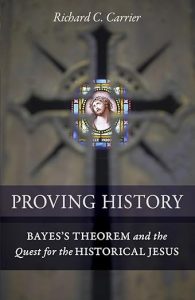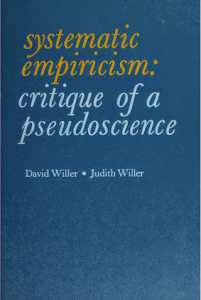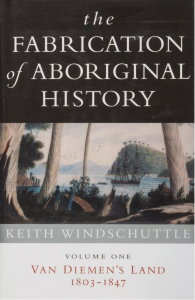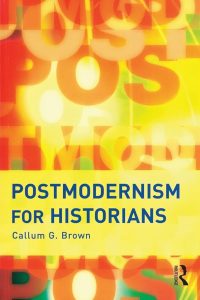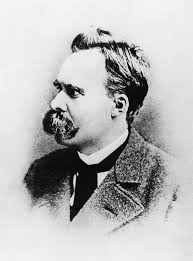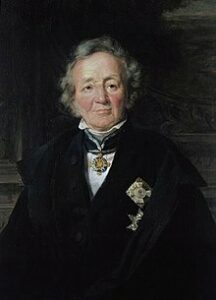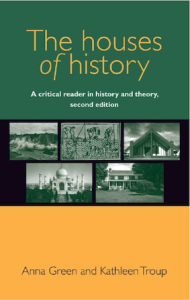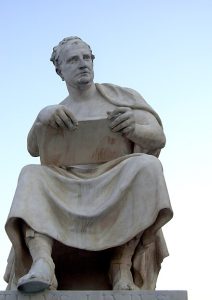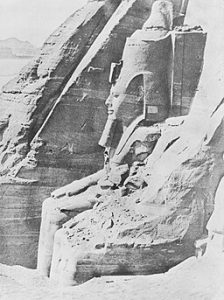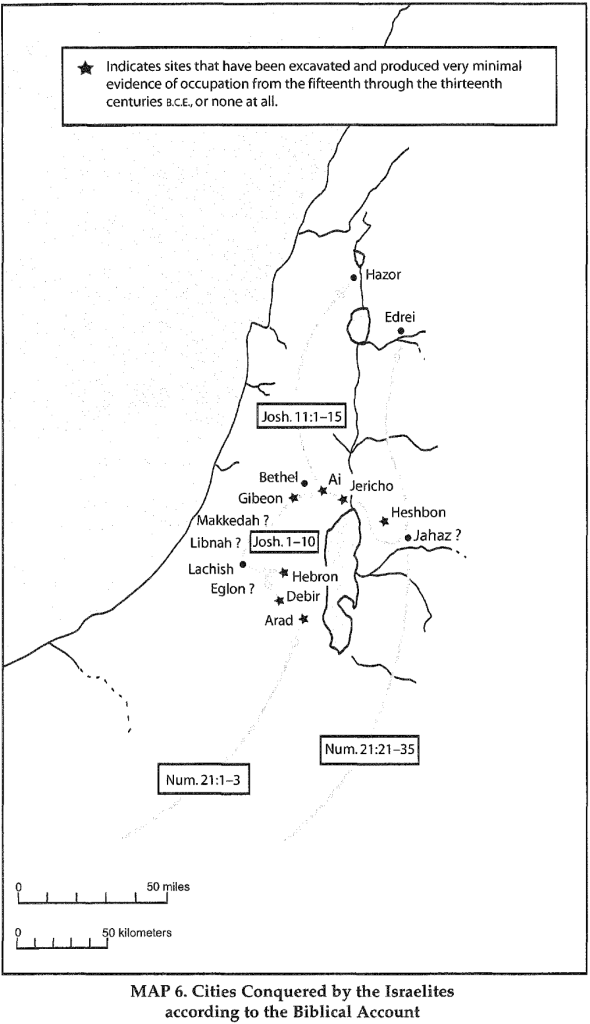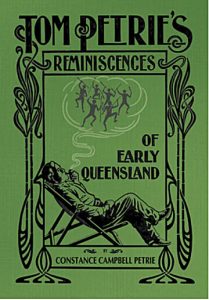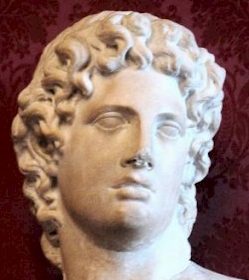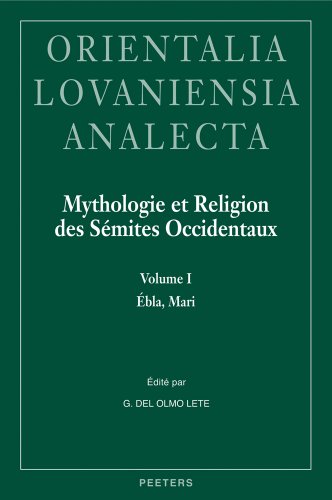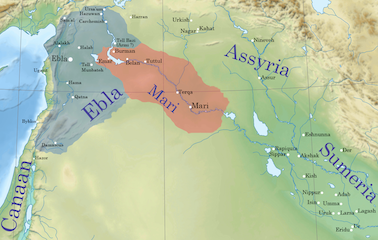Previous posts in this series:
- Jesus Mythicism and Historical Knowledge, Part 1: Historical Facts and Probability
- Jesus Mythicism and Historical Knowledge, Part 2: Certainty and Uncertainty in History
- Jesus Mythicism and Historical Knowledge, Part 3: Prediction and History
* For an excellent introduction to Bayes‘ approach to problem solving read Sharon McGrayne’s The Theory That Would Not Die: How
Next, he devised a thought experiment, a 1700s version of a computer simulation. Stripping the problem to its basics, Bayes imagined a square table so level that a ball thrown on it would have the same chance of landing on one spot as on any other. Subsequent generations would call his construction a billiard table, but as a Dissenting minister Bayes would have disapproved of such games, and his experiment did not involve balls bouncing off table edges or colliding with one another. As he envisioned it, a ball rolled randomly on the table could stop with equal probability anywhere.
We can imagine him sitting with his back to the table so he cannot see anything on it. On a piece of paper he draws a square to represent the surface of the table. He begins by having an associate toss an imaginary cue ball onto the pretend tabletop. Because his back is turned, Bayes does not know where the cue ball has landed.
Next, we picture him asking his colleague to throw a second ball onto the table and report whether it landed to the right or left of the cue ball. If to the left, Bayes realizes that the cue ball is more likely to sit toward the right side of the table. Again Bayes’ friend throws the ball and reports only whether it lands to the right or left of the cue ball. If to the right, Bayes realizes that the cue can’t be on the far right-hand edge of the table.
He asks his colleague to make throw after throw after throw; gamblers and mathematicians already knew that the more times they tossed a coin, the more trustworthy their conclusions would be. What Bayes discovered is that, as more and more balls were thrown, each new piece of information made his imaginary cue ball wobble back and forth within a more limited area.
As an extreme case, if all the subsequent tosses fell to the right of the first ball, Bayes would have to conclude that it probably sat on the far left-hand margin of his table. By contrast, if all the tosses landed to the left of the first ball, it probably sat on the far right. Eventually, given enough tosses of the ball, Bayes could narrow the range of places where the cue ball was apt to be.
Bayes’ genius was to take the idea of narrowing down the range of positions for the cue ball and—based on this meager information—infer that it had landed somewhere between two bounds. This approach could not produce a right answer. Bayes could never know precisely where the cue ball landed, but he could tell with increasing confidence that it was most probably within a particular range. Bayes’ simple, limited system thus moved from observations about the world back to their probable origin or cause. Using his knowledge of the present (the left and right positions of the tossed balls), Bayes had figured out how to say something about the past (the position of the first ball). He could even judge how confident he could be about his conclusion. (p. 7)
In the late 1990s Earl Doherty revitalized public interest in the question of whether Jesus had been a historical figure with the Jesus Puzzle website (a new version is now available here) and book, The Jesus Puzzle (link is to a publicly available version — though Doherty subsequently published a much more detailed volume a few years later). In the wake of that controversy Richard Carrier undertook to examine the arguments for and against the existence of Jesus with the authority of a doctorate in ancient history behind him. To this end, Carrier initially published two works, the first, Proving History, laying the groundwork of the method he would be using to address the question of Jesus’ historicity, and then On the Historicity of Jesus, the volume in which he applied his Bayesian probability* approach to the question. In that second volume Carrier concluded that the odds against Jesus having existed were significantly higher than the opposing view.
Carrier regularly argued that the evidence to be found in the New Testament was predicted or could well have been predicted by the hypothesis that Jesus did not exist. As noted in my previous post, the term he used most often was “expected”, but he made clear in Proving History by “expectation” in this context he meant “predicted”.
Prediction or Circularity?
It would have been more accurate to have simply said that the evidence cited is consistent with the view that Jesus did not exist. The hypothesis did not “predict” any evidence. Indeed, one might even say that the hypothesis was drawn from the sources in the first place, so it is circular logic to then say that the hypothesis predicted the evidence that gave rise to that hypothesis.
Carrier’s stated aim is to form a
hypotheses that make[s] … substantial predictions. This will give us in each case a minimal theory, one that does not entail any ambitious or questionable claims . . . a theory substantial enough to test. (On the Historicity [henceforth = OHJ], 30 – bolding is my own in all quotations)
I argue, rather, that all Carrier has been able to accomplish is to show that a hypothesis is consistent with the data that it was created to explain. Historical research, as I have been attempting to show in the previous posts, cannot “predict” in the ways Carrier asserts.
Carrier begins with a “minimal Jesus myth theory”:
. . . the basic thesis of every competent mythicist, then and now, has always been that Jesus was originally a god, just like any other god (properly speaking, a demigod in pagan terms; an archangel in Jewish terms; in either sense, a deity), who was later historicized, just as countless other gods were, and that the Gospel of Mark (or Mark’s source) originated the Christian myth familiar to us by building up an edifying and symbolically meaningful tale for Jesus, drawing on passages from the Old Testament and popular literature, coupled with elements of revelation and pious inspiration. The manner in which Osiris came to be historicized, moving from being just a cosmic god to being given a whole narrative biography set in Egypt during a specific historical period, complete with collections of wisdom sayings he supposedly uttered, is still an apt model, if not by any means an exact one. Which is to say, it establishes a proof of concept. It is in essence what all mythicists are saying happened to Jesus.
Distilling all of this down to its most basic principles we get the following set of propositions:
1. At the origin of Christianity, Jesus Christ was thought to be a celestial deity much like any other.
2. Like many other celestial deities, this Jesus ‘communicated’ with his subjects only through dreams, visions and other forms of divine inspiration (such as prophecy, past and present).
3. Like some other celestial deities, this Jesus was originally believed to have endured an ordeal of incarnation, death, burial and resurrection in a supernatural realm.
4. As for many other celestial deities, an allegorical story of this same Jesus was then composed and told within the sacred community, which placed him on earth, in history, as a divine man, with an earthly family, companions, and enemies, complete with deeds and sayings, and an earthly depiction of his ordeals.
5. Subsequent communities of worshipers believed (or at least taught) that this invented sacred story was real (and either not allegorical or only ‘additionally’ allegorical).
That all five propositions are true shall be my minimal Jesus myth theory. (OHJ 52f)
By explaining that his “minimal myth theory” consists of the core of what Jesus myth exponents themselves have claimed, Carrier in fact is conceding that his “minimal” points are based on the information available in the sources that he will proceed to say he will “expect” to find, or to “predict” will be in the sources. (Earl Doherty, in particular, was Carrier’s source for the interpretation that Jesus was originally understood to be a deity in heaven rather than a man on earth.)
Now those mythicists such as Earl Doherty arrived at their concept of a mythical Jesus in large measure as a result of analysing and drawing conclusions directly from the New Testament itself as well as from extra-biblical sources. So when Carrier declares that the evidence in the New Testament is what his “minimal Jesus myth theory” “expected” or “predicted”, he is in effect reasoning in a circle. The mythicist view of Doherty (and of many other earlier mythicists) was based on his reading of the New Testament. So the passages in the New Testament can hardly have been what would be “expected” according to mythicism; rather, they were the beginning of the “theory”, not its expected conclusion.
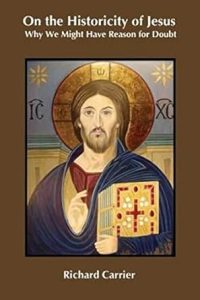 The approach as Carrier sets it out sounds scientific enough ….
The approach as Carrier sets it out sounds scientific enough ….
We have to ask of each piece of evidence:
1. How likely is it that we would have this evidence if our hypothesis is true? (Is this evidence expected? How expected?)
2. How likely is it that the evidence would look like it does if our hypothesis is true? (Instead of looking differently; having a different content, for example.)
3. Conversely, how likely is it that we would have this evidence if the other hypothesis is true? (Again, is this evidence expected? How expected?)
4. And how likely is it that the evidence would look like it does if that other hypothesis is true? (Instead of looking differently; having a different content, for example.)
And when asking these questions, the ‘evidence’ includes not just what we have, but also what we don’t have. Does the evidence—what we have and what we don’t, what it says and what it doesn’t—make more sense on one hypothesis than the other? How much more? That’s the question. (OHJ, 278)
But the problem is that all of those questions were raised and fully addressed by Earl Doherty and others when they formulated their view that, on the basis of their answers to those questions, Jesus was a mythical creation and not a historical figure. So to turn around and begin with the conclusions of mythicists to say that the evidence we find in the New Testament is exactly what we would expect according to mythicism, is to simply work backwards from what the mythicists have done in the first place.
In other words, there is no prediction of what one might find in the evidence. There is no “expectation” that we might find such and such sort of idea. Rather, the sources themselves have long raised the kinds of questions that have led to the mythicist theory in the first place.
Example 1: Clement’s Letter
Look at the example of Carrier’s reference to the letter of 1 Clement:
The fact that this lengthy document fully agrees with the expectations of minimal mythicism, but looks very strange on any version of historicity, makes this evidence for the former against the latter. . . . [O]n minimal mythicism this is exactly the kind of letter we would expect to be written in the first century entails that its consequent probability on mythicism is 100% (or near enough). (OHJ, 314f – italics in the original in all quotations)
But Doherty’s mythicist view was shaped by such evidence. So the characteristics of Clement’s letter are what lay behind the mythicist view, so it is erroneous to say that the letter is what we would expect if mythicism were true. Doherty, for example, notes
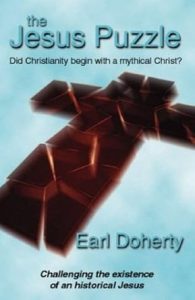 Clement must be unfamiliar with Jesus’ thoughts in the same vein, as presented in Matthew’s Sermon on the Mount and Luke’s Sermon on the Plain. Clement also shows himself to be unfamiliar with the Gospel teachings of Jesus on many other topics discussed in his letter.
Clement must be unfamiliar with Jesus’ thoughts in the same vein, as presented in Matthew’s Sermon on the Mount and Luke’s Sermon on the Plain. Clement also shows himself to be unfamiliar with the Gospel teachings of Jesus on many other topics discussed in his letter.
When Clement comes to describe Jesus’ suffering (ch.16) we must assume that he has no Gospel account to paraphrase or quote from memory, for he simply reproduces Isaiah 53. His knowledge of Jesus’ passion comes from scripture. Clement’s ignorance on other Gospel elements has been noted at earlier points in this book. . . .
Since Clement knows so little of oral traditions about Jesus . . . .
We have seen in the Pauline letters that the heavenly Christ was regarded as giving instructions to prophets through revelation. Clement shares in the outlook that sees Christ’s voice as residing in scripture. . . .
In Clement’s world, these things have come to be associated with revelations from the spiritual Christ. . . (Jesus Puzzle, 261f)
The oddities in the letter of Clement have piqued the curiosity of those who have seen in them support for the mythicist view of Jesus. The mythicist view of Jesus does not “predict” that such a letter would exist. It is the other way around.
Example 2: Extra-Biblical Sources
Notice another instance of this circularity.
When it came to the pervasive silence in other external documents (Christian and non-Christian), and the lack of many otherwise expected documents, I assigned no effect either way (although sterner skeptics might think that far too generous to minimal historicity). . . .
The probabilities here estimated assume that nothing about the extrabiblical evidence is unexpected on minimal mythicism. So the consequent probability of all this extrabiblical evidence on … (minimal mythicism) can be treated as 100% across the board . . . . Either way, as a whole, the extrabiblical evidence argues against a historical Jesus. It’s simply hard to explain all its oddities on minimal historicity, but not hard at all on minimal mythicism. (OHJ, 356, 358)
On the contrary, it is the extra-biblical sources that have been in part responsible for generating doubts about the historicity of Jesus ever since at least the early nineteenth century. If the extra-biblical evidence were different then the question of Jesus’ historicity is unlikely to have arisen in the first place.
I have no quibble with Carrier’s last two sentences in the above quotation if they are taken alone, without the context of “expectation/prediction”. What they are really confirming is that the available evidence is consistent with the mythicist view, not that it is predicted by mythicism.
Example 3: Expected Fiction?
In discussing one particular miraculous event in the life of Jesus Carrier concludes:
As history, all this entails an improbable plethora of coincidences; but as historical fiction, it’s exactly what we’d expect. (OHJ, 487)
In this case what is said to be “expected” is nothing more than a definition of the nature of fiction. The unbelievable coincidences define the story as fiction. They are not the expected observation of something already known to be fiction. They are the fiction.
Example 4: Paul’s Letters
The foundation of all Jesus myth views from Arthur Drews and Paul-Louis Couchoud to George Albert Wells and Earl Doherty has been the epistles of Paul. The questions raised by what Paul does not say and the ways he speaks in what he has to say have raised perennial questions among theologians so there is no surprise to find many passages becoming bedrock among mythicist arguments. So to say that those passages in Paul are what might be predicted by mythicism is getting everything back to front. Those passages are largely the foundation of the mythicist views, the port from which mythicism sailed, not the new continent of evidence it discovered or “expected”.
Again Carrier phrases the problem in terms of “prediction” of what one will find in the sources:
So even if, for example, a passage is 90% expected on history (and thus very probable in that case), if that same passage is 100% expected on myth, then that evidence argues for myth . . . . This is often hard for historians to grasp, because they typically have not studied logic and don’t usually know the logical basis for any of their modes of reasoning . . . .
I have to conclude the evidence of the Epistles, on all we presently know, is simply improbable on h (minimal historicity), but almost exactly what we expect on -h (minimal mythicism). . . .
Paul claimed these things came to him by revelation, another thing we expect on mythicism. . . .
On the [mythicism] theory, this is pretty much exactly what we’d expect Paul to write. . . .
This passage in Romans is therefore improbable on minimal historicity, but exactly what we could expect on minimal mythicism. . . .
Whereas this is all 100% expected on minimal mythicism.
The evidence of the Epistles is exactly 100% expected on minimal mythicism. . . In fact, these are pretty much exactly the kind of letters we should expect to now have from Paul (and the other authors as well) if minimal mythicism is true. (OHJ, 513, 528, 536, 566, 573, 574, 595)
Predicting or Matching the Evidence?
So Carrier is able to conclude,
All the evidence is effectively 100%, what we could expect if Jesus didn’t exist and minimal mythicism, as defined [above], is true. (OHJ, 597)
On the contrary, I suggest that many readers have noticed that the sources contain difficulties if we assume Jesus to have lived in the real world outside the gospels. It is from those “difficulties” that are apparently inconsistent with a historical figure that the Jesus myth view has arisen. By proposing to “test” the mythicist view by setting up “expectations” of what we will find in the sources really comes down to merely confirming the problematic passages in the sources that gave rise to the myth view in the first place.
What Carrier is doing, I suggest, is simply describing the sources that have given rise to doubts about the existence of Jesus. There is no prediction involved at all. He is describing the state of the evidence and showing how it is consistent with his “minimal Jesus myth theory”, something all other Jesus myth scholars before him have done — only without the veneer of scientific assurance.
Historians as a rule cannot predict what will be found in the available sources that might test their hypotheses. They usually do no more than point to what they believe to be consistent with their hypotheses.
The Rank-Raglan Hero Class and Prediction Therefrom
In the opening post of this series I addressed Carrier’s use of the Rank-Raglan “hero class” as a conceptual framework for certain types of persons in ancient myths and legends. There I noted that it is misleading to apply a percentage probability figure to Jesus (or anyone) being a member of that class because the total number of persons sharing the features of that class are well below 100. This is more than a pedantic point. The numbers of characters are not only limited, but they belong to distinctively unique cultural settings. This is the nature of all historical events. No two events are ever alike and no events are ever repeated except in the most general sense. Yes, there have been wars forever, but no two wars are ever alike. Each has had its own causes that are unrepeatable.
 Here are the twenty-one names studied by Raglan as sharing a features (born from a virgin, nothing of his childhood is known, etc) from a second list of random length (Raglan said he could have added many more common features — see the earlier post):
Here are the twenty-one names studied by Raglan as sharing a features (born from a virgin, nothing of his childhood is known, etc) from a second list of random length (Raglan said he could have added many more common features — see the earlier post):
- Oedipus
- Theseus
- Romulus
- Heracles
- Perseus
- Jason
- Bellerophon
- Pelops
- Asclepios
- Dionysos
- Apollo
- Zeus
- Joseph
- Moses
- Elijah
- Watu Gunung
- Nyikang
- Sigurd or Siegfried
- Llew Llawgyffes
- Arthur
- Robin Hood
We know that historical persons have been associated with mythical stories overlapping with the lives of those in the above list: Sargon, Cyrus, Alexander the Great, even Plato was said to have been born from a virgin mother, fathered by the god Apollo. But those mythical or “hero class” features of Cyrus and Alexander are quite distinct from the actual historical person; that fantastical myths have been told about real people makes no difference to the reality of those historical persons. As Raglan himself declared:
If, however, we take any really historical person, and make a clear distinction between what history tells us of him and what tradition tells us, we shall find that tradition, far from being supplementary to history, is totally unconnected with it, and that the hero of history and the hero of tradition are really two quite different persons, though they may bear the same name. (The Hero, 165)
If historical persons are known to have accrued mythical features of the Rank-Raglan type, then it does not follow that any person about whom such tales are told is likely to have not existed in reality. Simply counting up so many features (e.g. born of a virgin, attempt on his life as a child, etc) and saying “real myths” had more of those features than historical persons does not make any difference. Adding up more “hero class” labels to apply to any one person would be nothing more than evidence of more highly creative composers. Moreover, such fanciful tales appear to be born from the minds of the literate at a specific time and are not haphazard accretions of illiterate storytelling:
It should . . . be noted that this association of myths with historical characters is literary and not popular. There is no evidence that illiterates ever attach myths to real persons. The mythical stories told of English kings and queens—Alfred and the cakes, Richard I and Blondel, Queen Eleanor and Fair Rosamund, Queen Margaret and the robber, and so on—seem to have been deliberately composed; a well-known character and an old story were considered more interesting when combined. . . .
“From the researchers of J. Bedier upon the epic personages of William of Orange, Girard de Rousillon, Ogier the Dane, Raoul de Cambrai, Roland, and many other worthies, it emerges that they do not correspond in any way with what historical documents teach us of their alleged real prototypes.” (The Hero, 172, 174 — the latter citing A. van Gennep)
The conclusion we must draw is that the miraculous tales told about Jesus are at most evidence of the creative imaginations of literate classes. Whether a Jesus existed historically behind these tales is still quite possible and the mythical tales about him make no difference to that possibility. Tales are indeed told of historical persons that “do not correspond in any way” with the true historical figure. The only aspect in common seems to have been their name. If Jesus has more and more amazing tales told about him than others it follows that literate story tellers were more abundant or creative than for other figures. Such tales tell us nothing about the likelihood of his historicity.
I conclude that it is erroneous to use the Rank-Raglan hero class to indicate a prior probability of whether Jesus existed or not. Every situation in history is different. If the Greeks had many heroes of a certain type, and if the tales told about Jesus shared many tropes of those Greek heroes, it might mean nothing more than that very fanciful tales were told about Jesus that caused the “real Jesus” to be lost behind the world of myth. Many theologians would agree. In other words, the historian cannot make predictions based on probabilities to determine how likely any historical event or person might have been. Historical events and persons are contingent. They are all distinctive and unrepeatable. They either happen or exist or they do not. Or the researcher simply does not know if they did or not. Probability does not enter the discussion.
The Evidence: Expected or Known in Advance?
What Carrier calls “expected evidence” is, rather, a description of what has been with us (and Jesus myth researchers) from the beginning. The state of evidence gave rise to certain questions that led to suspicions that Jesus was not a historical figure. So returning to that evidence and saying that the myth notion “predicted” the state of that evidence is a misplaced project.
Try to imagine, if you can, that you have never heard of Christianity. Try to imagine what a new ancient religion would look like if it combined features of Greco-Roman mystery cults and some form of Judaism. If you had never heard of Christianity would you really imagine a religion that turned out to be very much like Christianity? I doubt it. You might postulate a series of angelic beings or just one of them, or a translated Enoch, in the distant mythical past turned into saviour deities in some fashion. You would surely see little reason to introduce a human deity in recent times. Yet Carrier concludes his major study on the historicity of Jesus with the conviction that his hypothesis predicted (or “could have predicted”) the beginnings of Christianity:
So we should actually have expected Jewish culture to find a way to integrate the same idea; after all, every other national culture was doing so. And this is where we have to look at the possibilities in light of what we now know. Had I been born in the year 1 and was asked as a young educated man what a Jewish mystery religion would look like, based on what I knew of the common features of mystery cult and the strongest features of Judaism, I could have described Christianity to you in almost every relevant particular—before it was even invented. It would involve the worship of a mythical-yet-historicized personal savior, a son of god, who suffered a death and resurrection, by which he obtained salvation for those who communed with his spirit, thereby becoming a fictive brotherhood, through baptism and the sharing of sacred meals. How likely is it that I could predict that if that wasn’t in fact how it came to pass? Influence is the only credible explanation. To propose it was a coincidence is absurd. (OHJ, 611)
It is very easy to predict the current state of the evidence that has been with us from the beginning. Prediction in hindsight is easy. It is so easy to know what to have expected after the event. We only have to compare the many predictions that the recent US elections would be a tight race between Kamala Harris and Donald Trump. After the election it was easy to look back and see what we “should have expected” and why.
Jesus either existed or he did not. If he existed it was not with a probability of less than 1. If he existed he existed 100%. If we can’t be sure he existed then we are not sure or we cannot know. If we cannot know we cannot say he may have existed at a 30% probability. That would make no sense if he existed. If the historian does not know for sure then the historian does not know. The historian may say it is likely or not likely he existed, but that still leaves the question unanswered. Those are the fundamental options with respect to any historical event — it either happened or it didn’t or we have no evidence or at best ambiguous evidence for it happening.

Don’t get me wrong. I like Bayes’ theorem. It is a brilliant tool at doing what it was designed to do. But historical research is not a science and few historians, maybe a few die-hard stubborn empiricist historians, would claim it is a science that can predict what will be found in the sources or even sometimes what will happen in the future. Historical events are unique. The justified historical approach to the question of Jesus is to study the Jesus bequeathed to us in the surviving sources. Whether a historical figure behind the myth and theology historically existed is an unknown and unknowable question, and, I think, ultimately irrelevant.
Carrier, Richard. On the Historicity of Jesus: Why We Might Have Reason for Doubt. Sheffield Phoenix, 2014.
Doherty, Earl. The Jesus Puzzle: Did Christianity Begin with a Mythical Christ? Canadian Humanist Publications, 1999.
Rank, Otto, Raglan, and Alan Dundes. In Quest of the Hero. Mythos. Princeton University Press, 1990.


